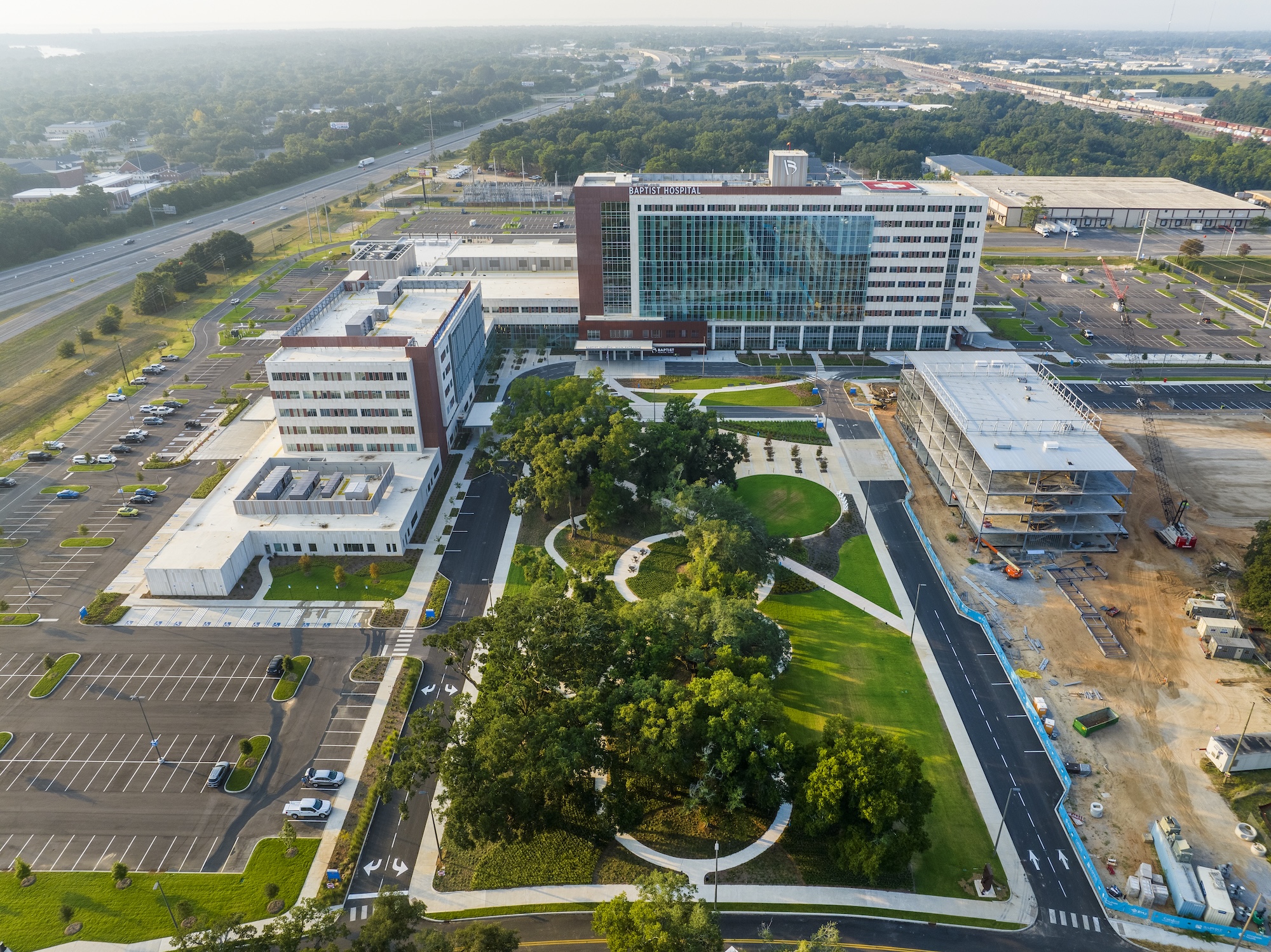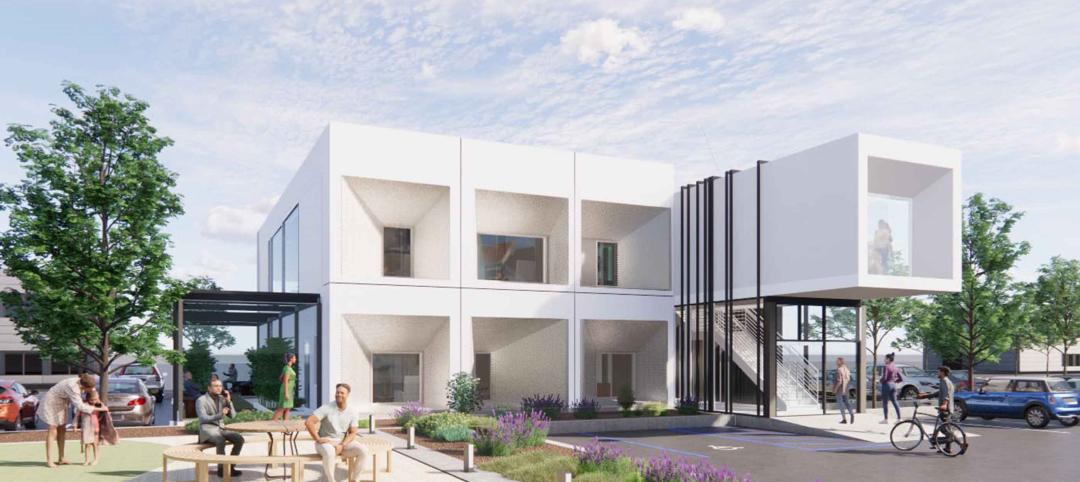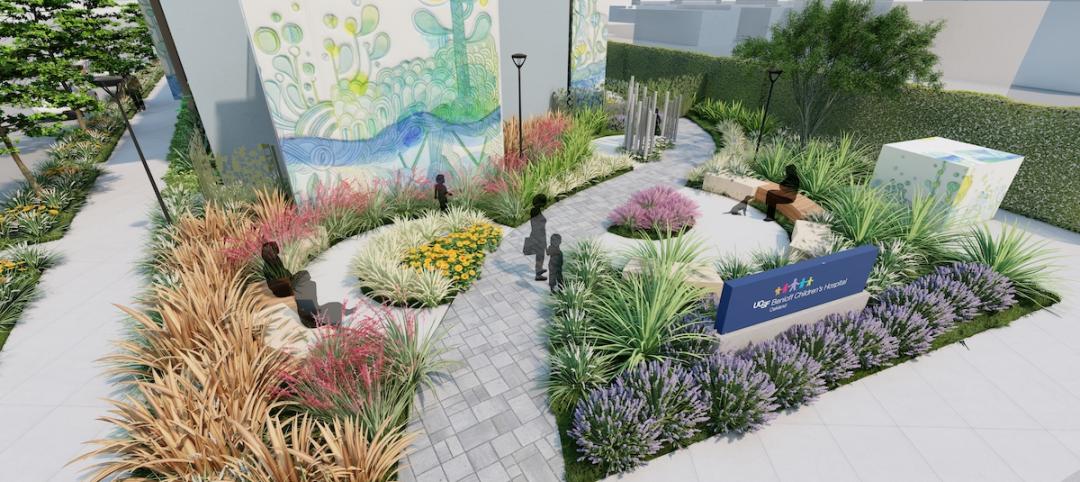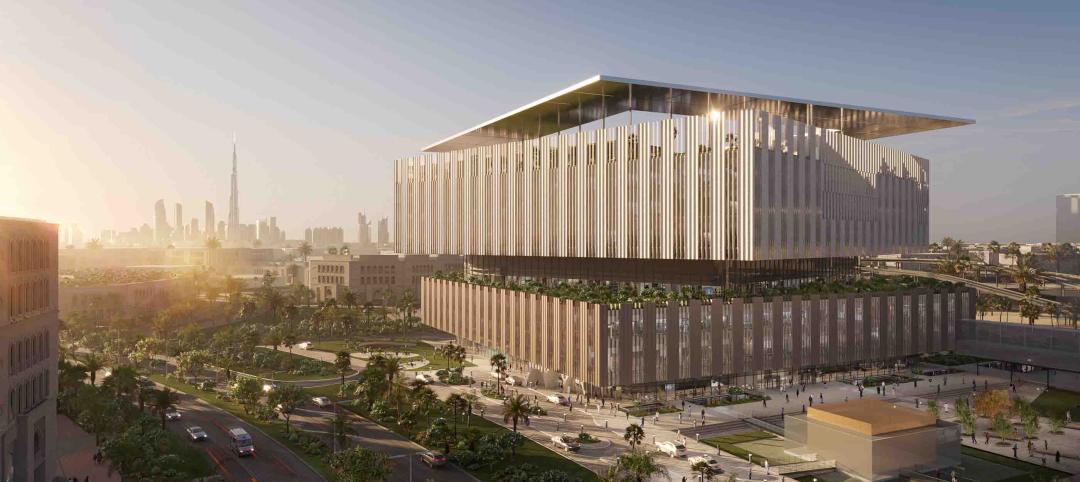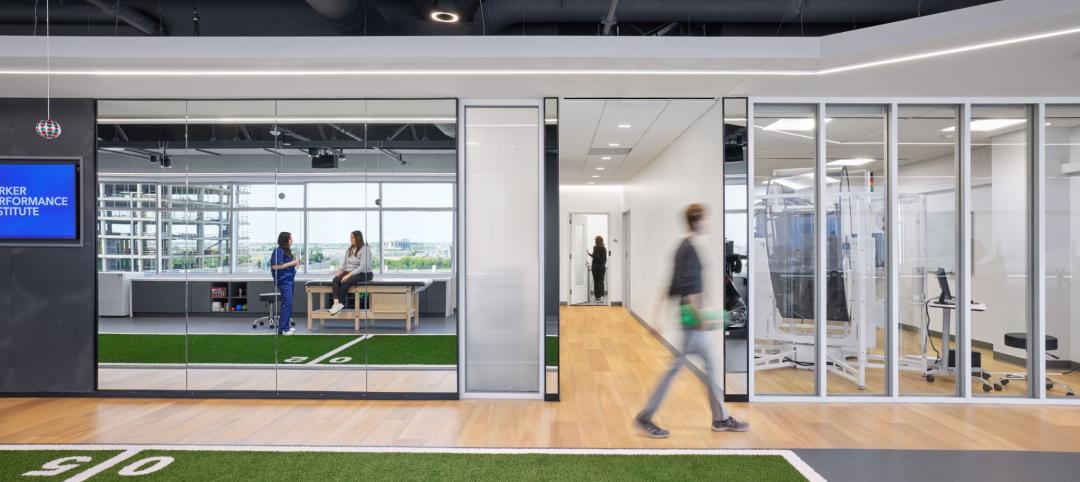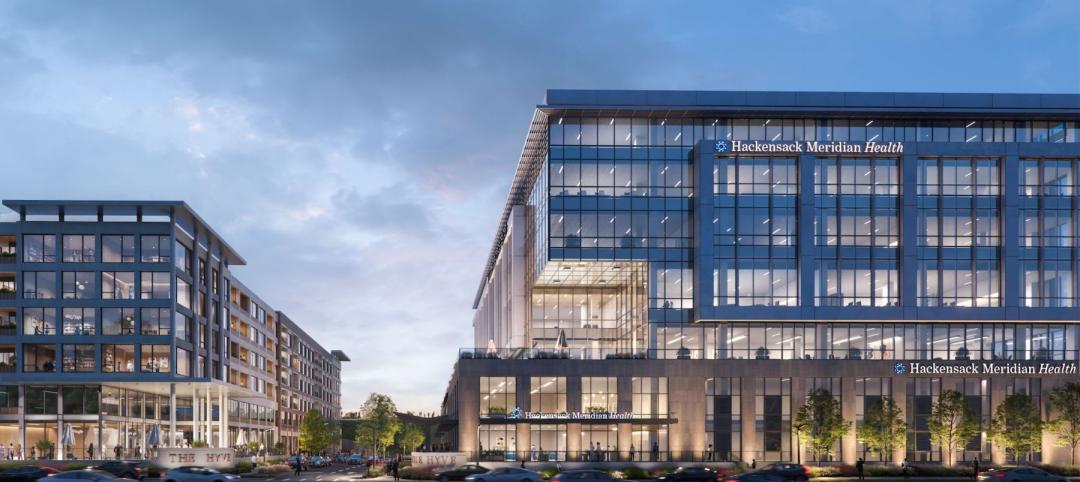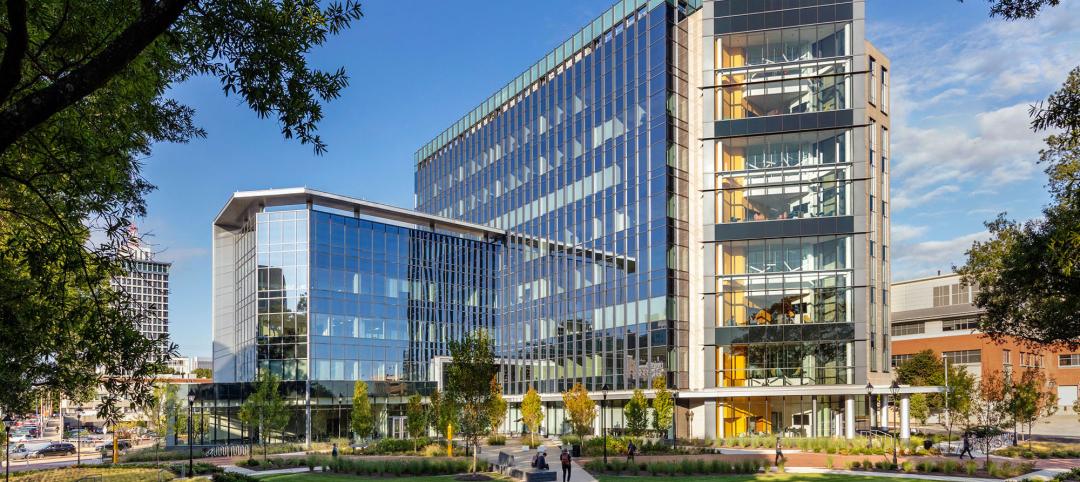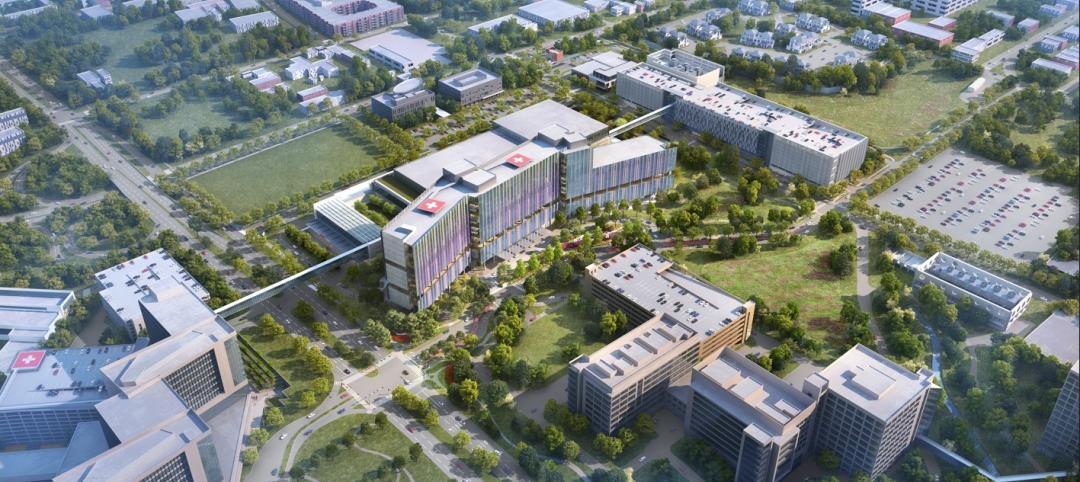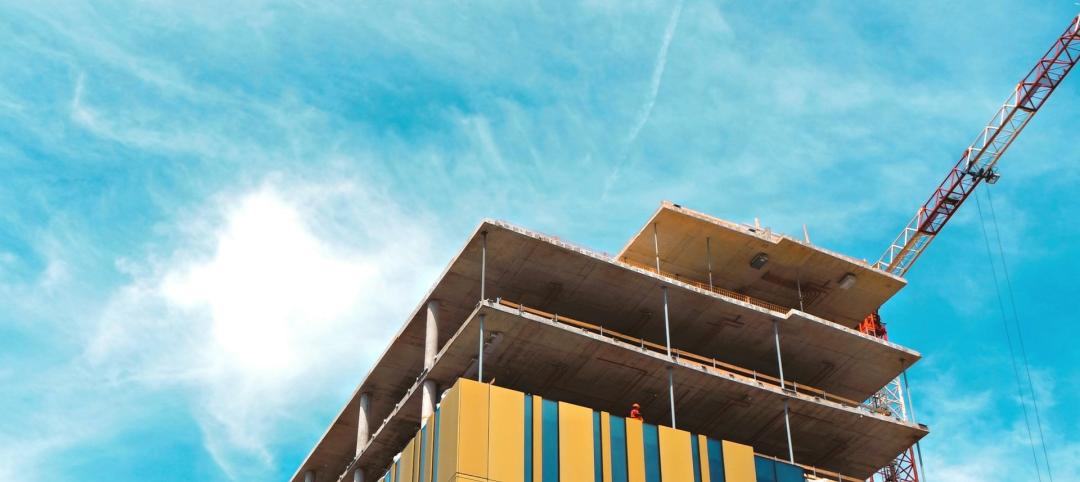Baptist Health Care’s new $650 million healthcare complex opened recently in Pensacola, Fla. Featuring a 10-story, 268-bed hospital, the project “represents the single-largest investment in the healthcare history of northwest Florida,” said Gresham Smith project executive Robert “Skip” Yauger, AIA, LEED AP.
The 602,000-sf Baptist Hospital is equipped with a Level II trauma center that provides 61 exam rooms and three triage areas. Other services include critical care areas, a mother-baby unit, surgery department with 25 procedure and operating rooms, specialty cardiac care treatment and procedure rooms. The building was designed with extra space for future expansion.
The project includes a six-story, 178-000 sf medical services building, the Bear Family Foundation Health Center. This facility houses multi-specialty services including oncology, women’s health, outpatient imaging, bariatrics, and cardiology. It also includes a conference center that will be used for public events, health education, and community outreach. A separate facility, a 72-bed behavioral health unit brings much needed behavioral health services to the community.
“This project to replace our 73-year-old legacy campus with a more modern, technologically advanced and accessible location was a generational opportunity for us,” says Baptist Health Care president and CEO Mark Faulkner. “This campus will raise the bar for health care experiences, safety, quality, and efficiency for generations to come.”
The 57-acre campus is organized around a park-like town square featuring groves of heritage oak trees. Amenities include walking paths, respite areas, and outdoor event spaces. The exterior of each building pays homage to the historical character of Pensacola’s local buildings and celebrates the natural surroundings of the beach community. Warm terracotta and shades of sandy white contrast to mark building entrances. Large spans of glass flood the interior with natural light.
The buildings were designed to be resilient to hurricanes. Durable materials, including precast concrete panels and impact glazing that surpass code minimum, and a hardened building structure and envelope, will withstand hurricane force winds and rain. Redundant electrical supplies and potable water systems will enable the hospital to operate off-grid during an emergency.
The interior of each building takes cues from the exterior design, using handcrafted materials, such as wood, bronze, and terrazzo, to create a warm, welcoming environment. Drawing inspiration from the oaks in the town square, large scale light fixtures reference sunlight streaming through Spanish moss. Planters and full-height windows bring the outdoors inside.
To aid with wayfinding, every patient destination on the first floor is accessible from the primary public concourse, while staff and materials circulation is separated in a secondary circulation system. Reminiscent of light reflecting over the ocean at sunrise or sunset, the color palette shifts colors at each level of the building. Transparent and translucent glass reduce patient anxiety at clinical entries, which are denoted by accent lighting, wood ceiling treatments and large-scale graphics. Lightwells bring daylight deep into the building’s core.
Owner: Baptist Health Care
Architect, MEP engineer, structural engineer: Gresham Smith
General contractor/construction manager: Brasfield & Gorrie
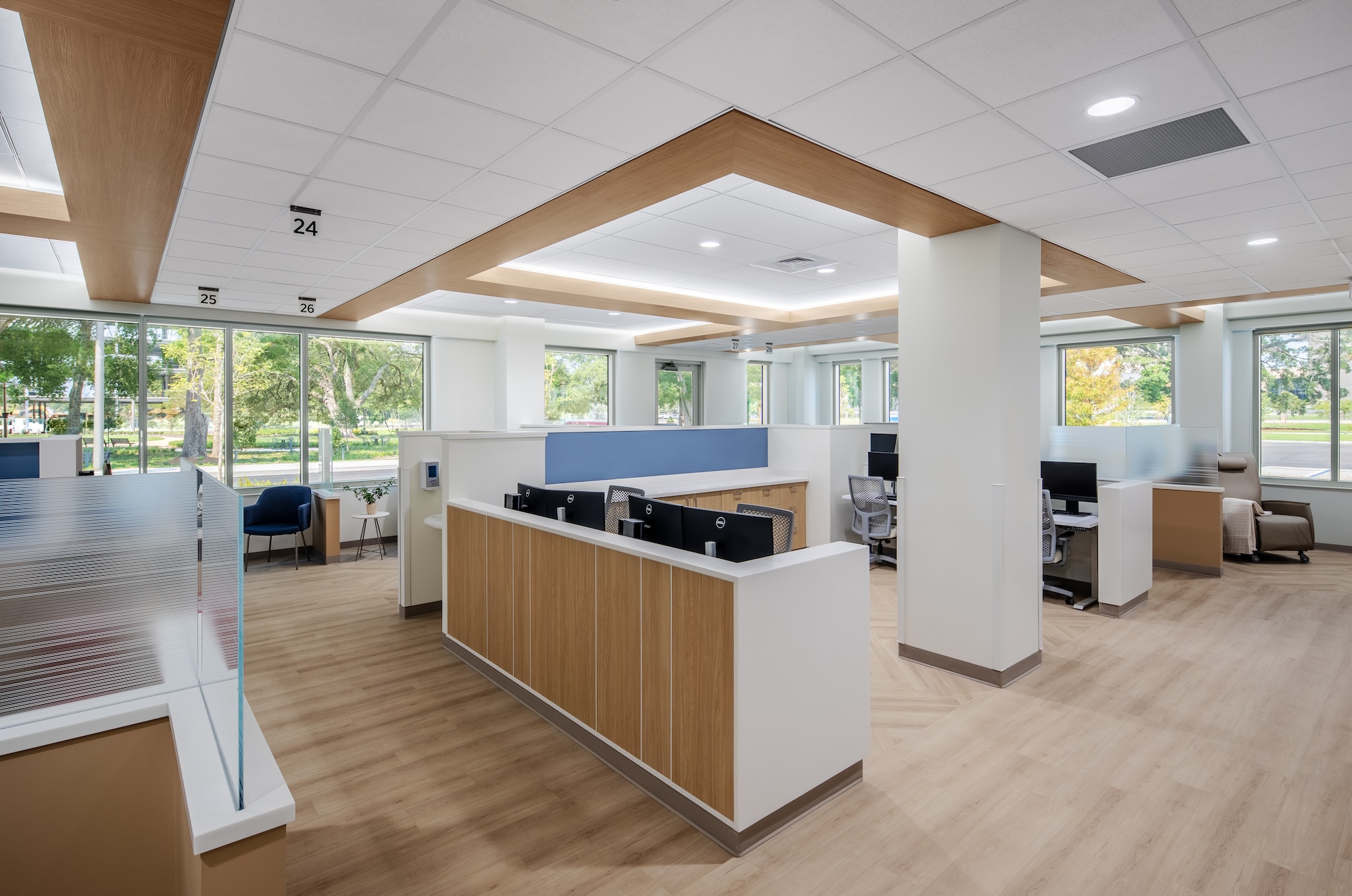
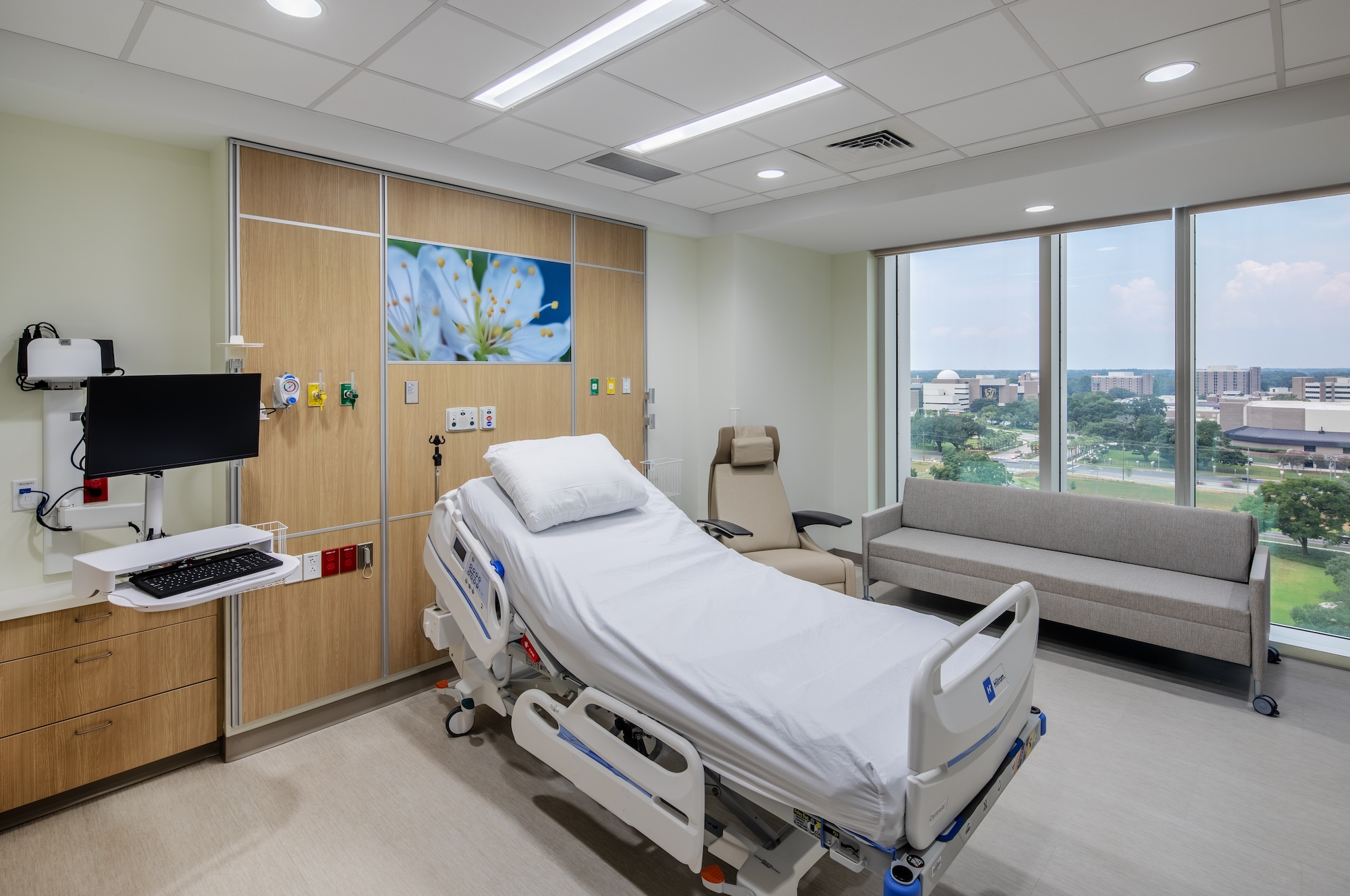
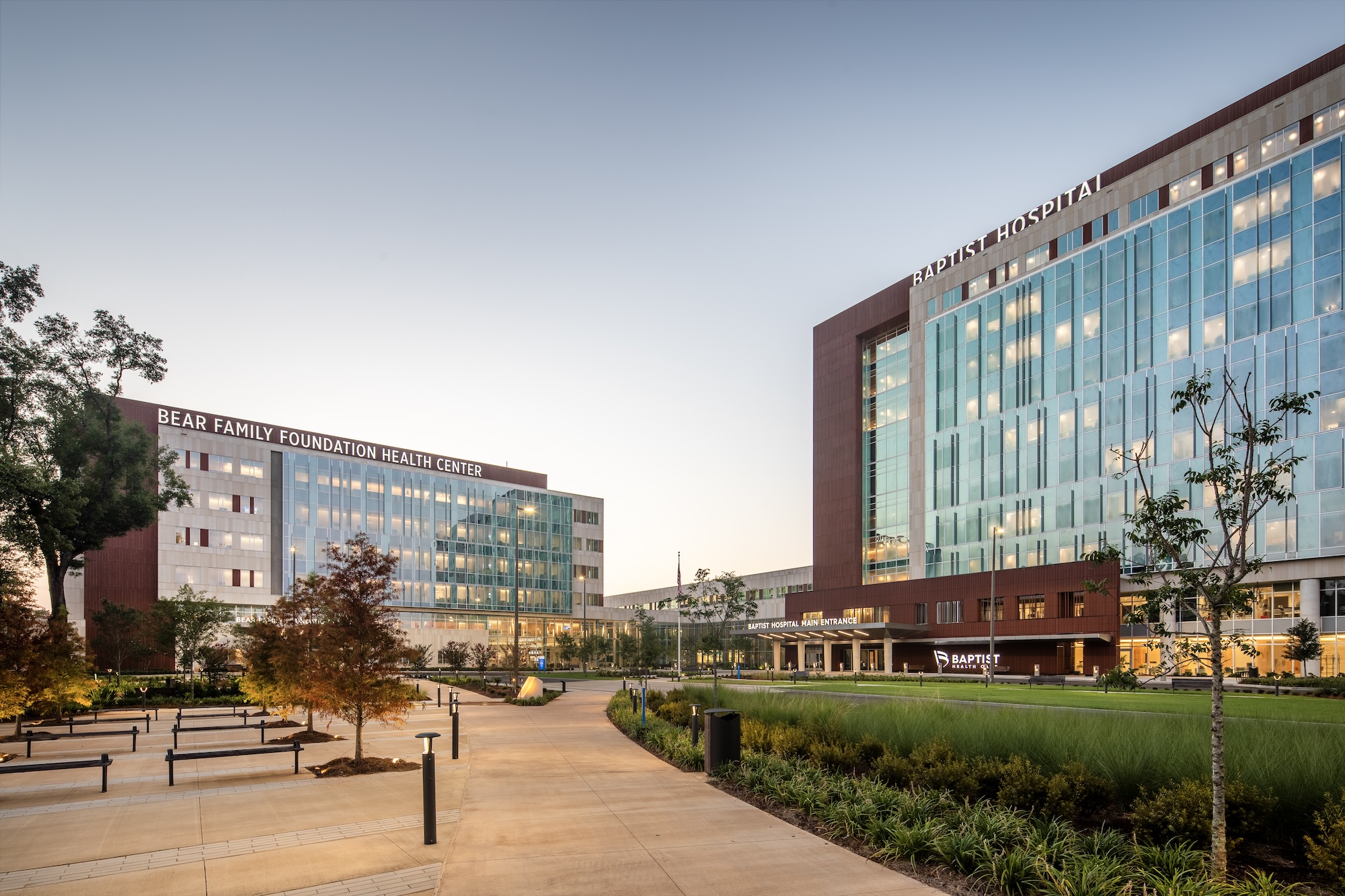
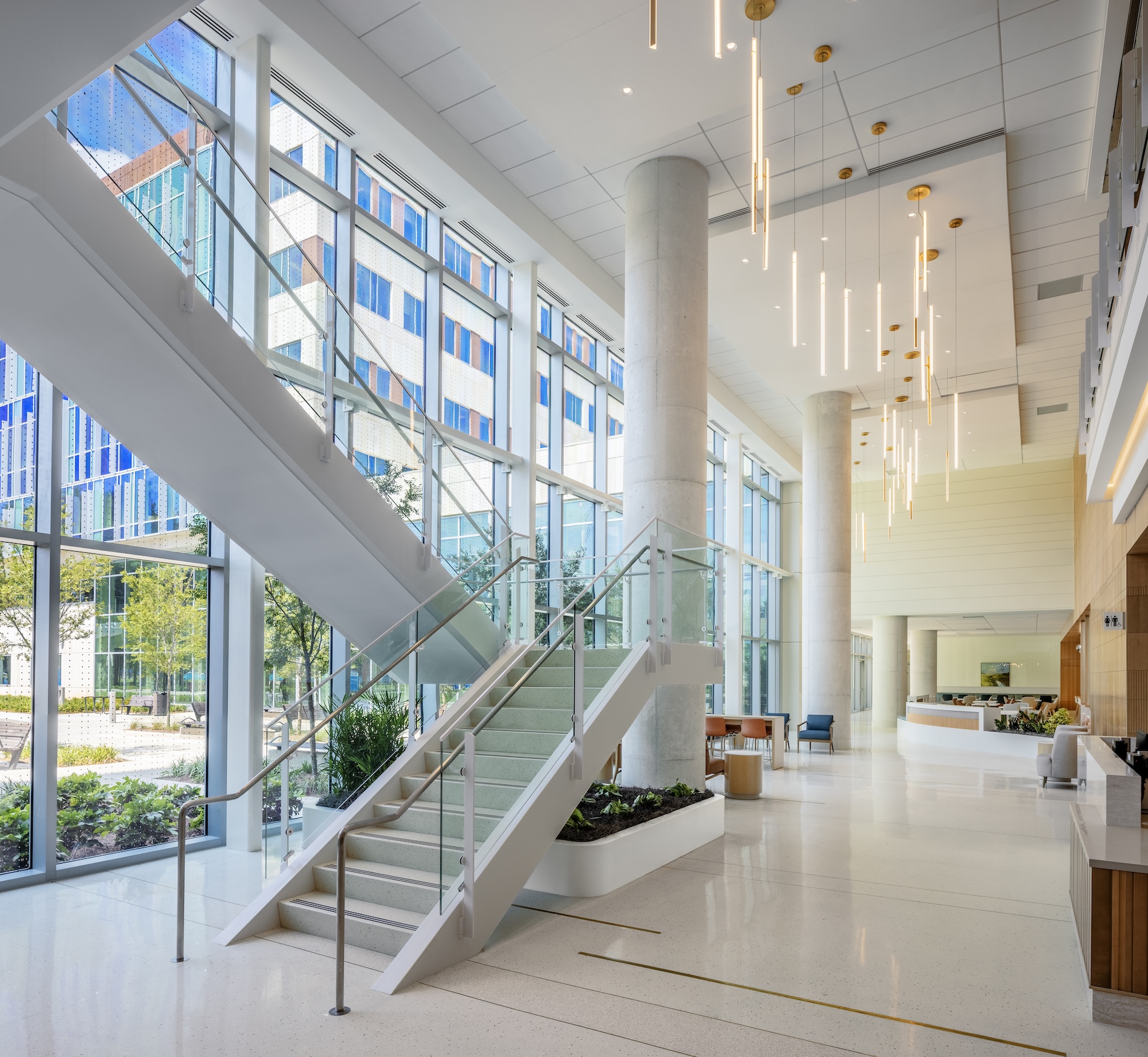
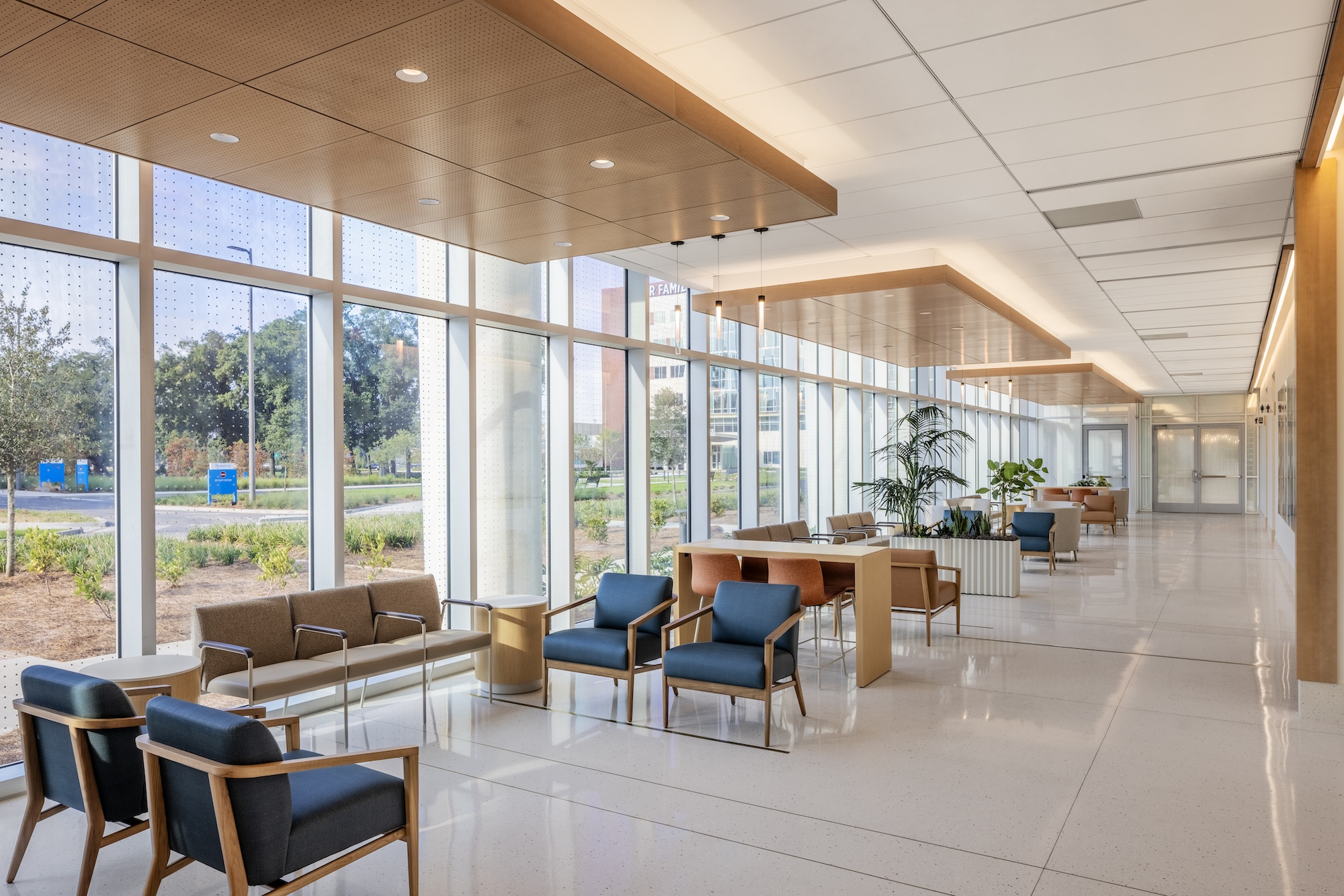
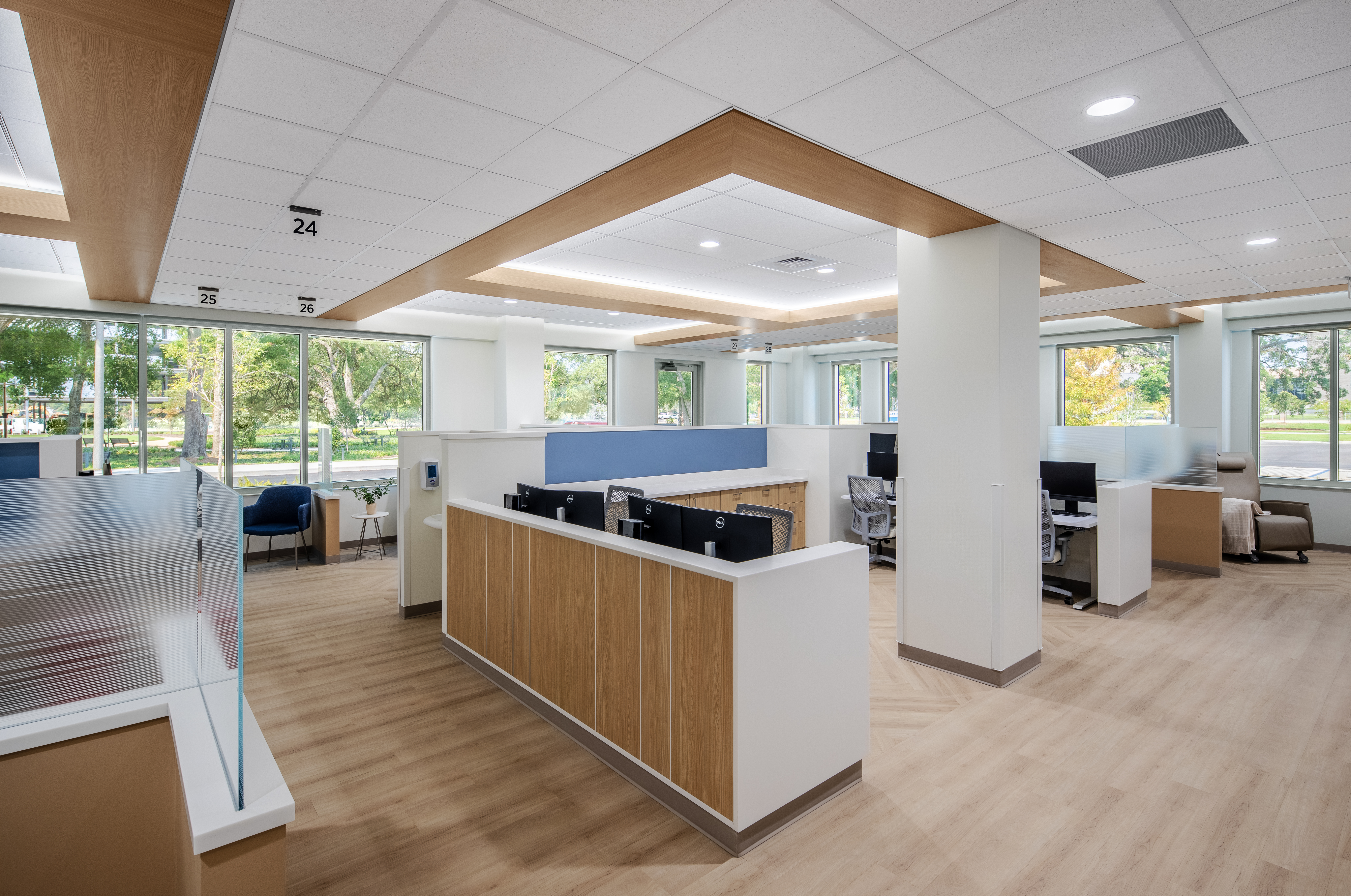
Related Stories
Healthcare Facilities | Mar 18, 2024
A modular construction solution to the mental healthcare crisis
Maria Ionescu, Senior Medical Planner, Stantec, shares a tested solution for the overburdened emergency department: Modular hub-and-spoke design.
Healthcare Facilities | Mar 17, 2024
5 criteria to optimize medical office design
Healthcare designers need to consider privacy, separate areas for practitioners, natural light, outdoor spaces, and thoughtful selection of materials for medical office buildings.
Healthcare Facilities | Mar 15, 2024
First comprehensive cancer hospital in Dubai to host specialized multidisciplinary care
Stantec was selected to lead the design team for the Hamdan Bin Rashid Cancer Hospital, Dubai’s first integrated, comprehensive cancer hospital. Named in honor of the late Sheikh Hamdan Bin Rashid Al Maktoum, the hospital is scheduled to open to patients in 2026.
Sports and Recreational Facilities | Mar 14, 2024
First-of-its-kind sports and rehabilitation clinic combines training gym and healing spa
Parker Performance Institute in Frisco, Texas, is billed as a first-of-its-kind sports and rehabilitation clinic where students, specialized clinicians, and chiropractic professionals apply neuroscience to physical rehabilitation.
Healthcare Facilities | Mar 7, 2024
A healthcare facility in New Jersey will be located at a transit station
The project is part of a larger objective to make transportation hubs more multipurpose.
University Buildings | Feb 21, 2024
University design to help meet the demand for health professionals
Virginia Commonwealth University is a Page client, and the Dean of the College of Health Professions took time to talk about a pressing healthcare industry need that schools—and architects—can help address.
Hospital Design Trends | Feb 14, 2024
Plans for a massive research hospital in Dallas anticipates need for child healthcare
Children’s Health and the UT Southwestern Medical Center have unveiled their plans for a new $5 billion pediatric health campus and research hospital on more than 33 acres within Dallas’ Southwestern Medical District.
Healthcare Facilities | Feb 6, 2024
New surgical tower enhances healthcare services of a Long Island, N.Y., hospital
The eight-story Petrocelli Surgical Pavilion includes 132 intensive care rooms.
Standards | Feb 1, 2024
Prioritizing water quality with the WELL Building Standard
In this edition of Building WELLness, DC WELL Accredited Professionals Hannah Arthur and Alex Kircher highlight an important item of the WELL Building Standard: water.
Industry Research | Jan 23, 2024
Leading economists forecast 4% growth in construction spending for nonresidential buildings in 2024
Spending on nonresidential buildings will see a modest 4% increase in 2024, after increasing by more than 20% last year according to The American Institute of Architects’ latest Consensus Construction Forecast. The pace will slow to just over 1% growth in 2025, a marked difference from the strong performance in 2023.


